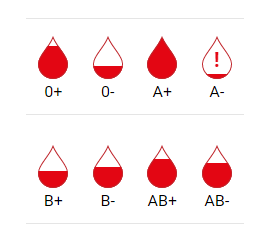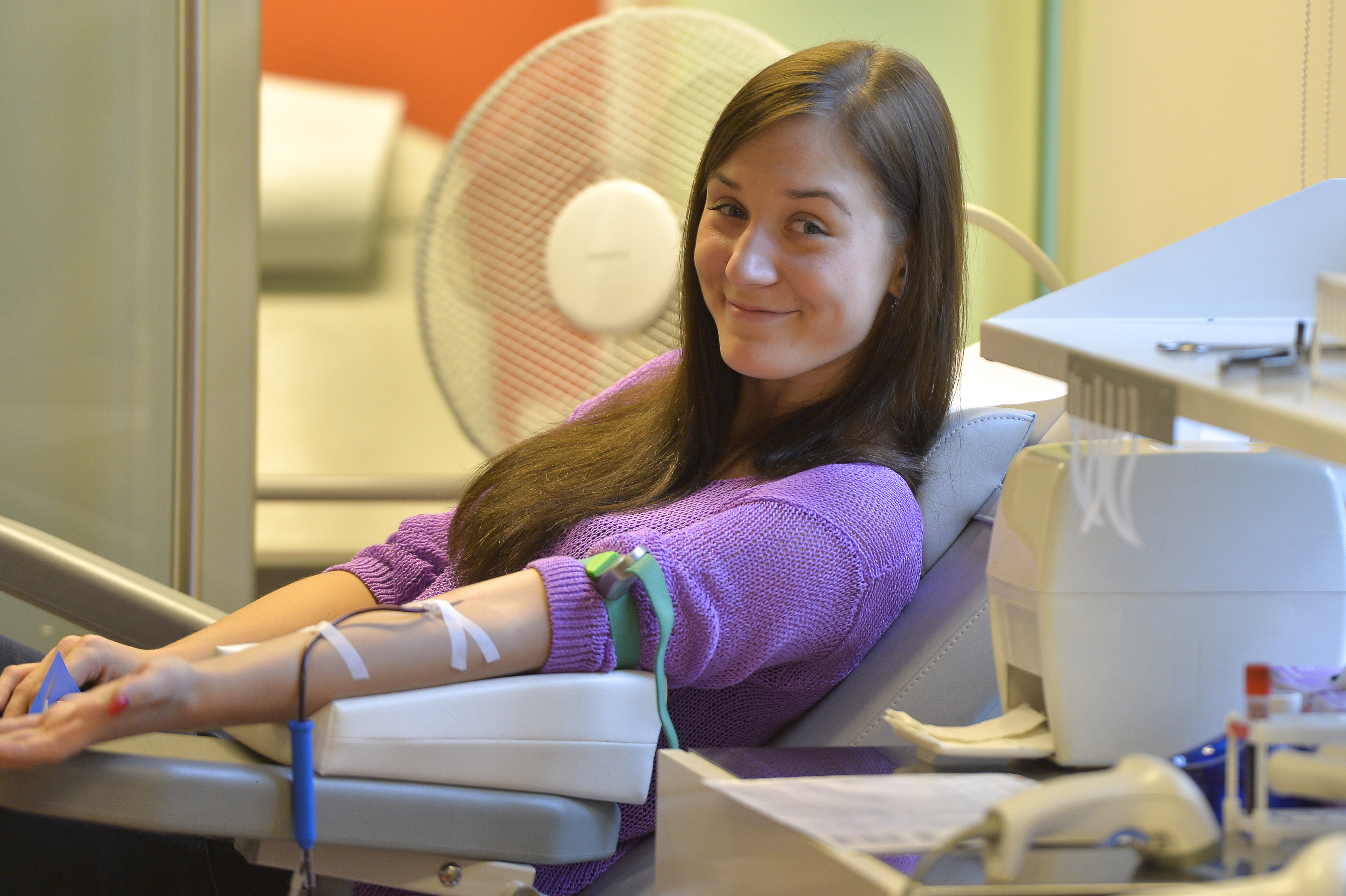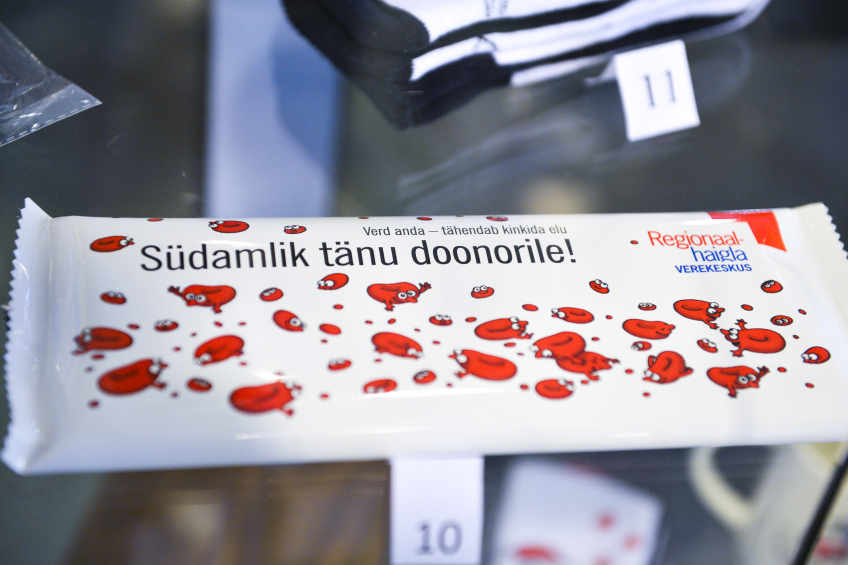FAQ
Frequently asked questions
Why should I donate blood, aren’t there plenty of donors?
Considering the number of people who meet the age requirements for donating blood, Estonia is about average in Europe for this indicator. Looking at the percentage of the population who give blood, though, Estonia’s 2.8% (2014) is far behind other countries. Each year, the number of donors has grown, but in order to prevent a crisis in future, we will need new donors as well as regular donors – people who are willing to help and for whom giving blood a few times a year is part of their lifestyle.
Being a blood donor is a form of charity that doesn’t take much time or effort and which is within the abilities of many of us. Also, don’t forget that anyone of us could also find ourselves needing blood some day.
Why are donors in Estonia not paid?
Unpaid, voluntary donors ensure the maximum level of safety of donor blood, and this is also in line with a World Health Organization recommendation. For instance, Lithuania and Germany have both paid and unpaid donorship and statistics show that the paid donors have up to eight times more blood-borne diseases in their blood supply than in blood of unpaid donors. This suggests that a sincere altruistic desire to help others and honesty in filling out the form and at the mini-physical are a better guarantee of the maximum level of blood transfusions, which is in the interests of us all as potential patients.
How many blood transfusions are needed per year? And how much blood is that?
Every donated dose of blood helps save someone’s life. In 2014, over 36,000 donors visited Estonian blood centres, giving a total of about 60,500 blood doses. Of these, 85,000 blood components were prepared for hospitals, and 20,000 patients benefited. Each dose of blood has priceless value, representing the donor and his or her desire to help those in need.
When does the Blood Centre send out personal invitations to give blood?
The Blood Centre sends out invitations to donors every day in the form of invitation cards, e-mails and text messages, according to that day’s needs. The goal of the invitations is to spread the word about blood drives and which blood types are needed. The Blood Centre also sends out urgent calls should the need for blood unexpectedly increase.
We urge donors to remember that hospitals need donor blood each and every day – so it’s important not to be passive and rely only on the invites. We encourage donors to regularly come in of their own volition to give blood, keeping track of the blood supplies for each type on our website.
What does the blood-meter on the Blood Centre’s website indicate?
The blood-meter, represented by red droplets in the header of our website, shows current supply levels, updated daily, and is a helpful resource for donors and prospective donors.
A certain optimum blood supply is needed to meet hospitals’ daily blood needs.
The red level within each blood droplet shows the supply of blood of that type.
- Extremely low level (with exclamation point) – less than 20% of optimum supply
- Low level – less than 30% of optimum blood supply
- Below medium level (blood drop is mostly white) – less than 50% of optimum
- Above medium level (largely red) – 50-80% of optimum
- High level and completely red blood – 80-100% of optimum
Do I have enough blood to donate it?
Adults have between four to five litres of blood. A donor gives 450 ml, which, depending on body weight, ranges from 7-13 percent of their blood volume. The plasma is replenished in an average of 24 hours, and the blood cells replenish within an average of three weeks. Giving blood is not harmful to the donor’s health; in fact it activates the process of blood cell formation. The donor’s blood cell count does not fall below the allowable limit.
How much time does it take to give blood?
Plan on the procedure taking about 45 minutes. This is the time that it will take to fill out the registration form, undergo the mini-physical and resting after the donation. The drawing of the blood itself will take only five to ten minutes.
If you are a first-time donor, budget a little more time, as you will be issued a donor card and during the physical, some conditions of being a donor will be explained to you. This will take less time for repeat donors.
How are donors selected?
All donors undergo a mini-physical before each time they give blood. This consists of a thorough conversation with a member of the Blood Staff’s medical staff, who will review the filled-out questionnaire and decide whether the person, given their state of health, would be a suitable donor. It is thus extremely important that the donor answer each question thoughtfully and honestly. All of the information gathered about donors is confidential.
Could I become infected with some virus while giving blood?
No. It isn’t possible for a donor to be infected with any disease, as the donor’s blood does not come into contact with anyone else’s blood and ONLY disposable, sterile needles and bags are used by the blood centre staff. All procedures conducted with the donor take place in line with safety requirements established in the EU.
Why do I have to rest after giving blood?
Every donor has to rest at least 10 minutes after giving blood. Even if you feel perfectly fine, you should drink juice or coffee after giving blood. This helps make up for the fluid your body lost. If you feel weak, the Blood Centre’s expert staff will quickly provide relief.
How many times a year can I give blood?
Males can give blood four or five times a year at an interval of at least two months.
Women can give blood three or four times a year, advisably three months apart.
Do donors have the right to take paid time off work for giving blood?
As of 1 July 2009, clause 7 (3) 5) of the Blood Act are entitled to time off work to give blood.
I don’t remember when I last gave blood. Where can I find out?
Repeat donors have a donor card with the date that the donor last gave blood and the next recommended donation time. If you don’t have your card on you, you can ask for the information at the Ädala tn blood centre’s registration desk (Ädala 2) on telephone 617 3001 (Monday and Friday from 8:00-16:00 and from Tuesday to Thursday from 11:00 to 19:00) or the Ülemiste Doonorikeskus registration desk (Valukoja 7, Ülemsite Health Centre) 664 0470 (Mon-Fri 09:00-17:00).
Donors can view their blood donation history on the donor portal e-Doonor.
What is e-Donor?
E-Donor is an environment that allows donors to view data about their blood donations and analysis results and to edit their contact details.. It also provides recommendations on health and nutrition if the donor’s haemoglobin level is not within the normal range.
Before giving blood, a questionnaire on one’s health and lifestyles can be filled out on e-Donor. After filling in the digital form, the questionnaire is active for seven days and the donor can come to the Blood Centre to give blood within that period. After that, the data is cancelled and the questionnaire has to be re-filled out.
NB! Questionnaires filled in digitally are accepted at the Blood Centre on Ädala tänav, the Ülemiste Doonorikeskus and also in various other facilities in Estonia. The questionnaire has to be filled in at least one day before coming to give blood.
You can log in to e-Doonor with your ID card or mobile-ID.
What will my blood be used for?
The specialists from the Blood Centre analyze every donor’s blood thoroughly. First, we determine the blood type in the ABO system and Rh, which is needed for match the patient with the type of blood needed. Then we test the blood for HIV, hepatitis B, hepatitis C and syphilis to ensure a safe transfusion for the patient.
Whole blood from donors is not used for transfusions. The blood dose is divided into erythrocytes (red blood cells), plasma and thrombocytes (platelets) and the patient is given only the components that he needs. It’s important to realize that one blood conation from a donor can save the lives of more than one person.
The components are packaged and preserved in suitable conditions – plasma in a deep-frozen state (-30 C); erythrocytes at ordinary refrigerator temperature; thrombocytes a warm temperature and kept continually agitated. The Blood Centre releases the components only based on orders from hospitals.
Is there a substitute for blood?
Blood is living tissue that cannot be produced industrially. The sole source of blood is another person.
What is apheresis?
The name of the method, apheresis, comes from the Greek word Aphairesis and means separation of blood cells or plasma from blood. For instance, a patient could need a quantity of platelets contained in four doses of blood. Apheresis allows them to be harvested from one donor simultaneously. Read more…
What do I get in return for giving blood?
As the donor, you get the satisfaction of helping others, something that can’t be measured in monetary terms. In addition, regular donors always have a good overview of their health. No money is paid for being a donor, as Estonia has a policy of voluntary and unpaid donorship. For its part, however, the Blood Centre can, however, offer small gifts meant for the donor.
What is a blood crisis?
It isn’t possible to foresee accidents. Thus, in a critical situation, the Blood Centre calls more donors to give blood. Estonia has fewer donors than it needs to cover hospitals’ needs in every possible situation. The various components of blood have a short shelf life. Erythrocyte – red blood cell – suspensions last a maximum of 35 days, thrombocytes for five to seven days and plasma, if frozen fresh, up to three years. Thus blood cannot be stockpiled in large quantities for the long term.
What blood type is most in demand?
As the greatest number of Estonians is type A and O positive, those are the types that are most needed. But actually all types are needed, as the distribution of rare and common blood types among donors and recipients is the same. AB negative – the most uncommon blood type in Estonia – people should not feel that their blood is not needed– people with this blood type are hospitalized all the time, just like the others.
How can I find out my blood type?
Donors’ blood type is determined according to different systems (ABO, Rhesus and Kell). First time donors find out their blood type at their first visit, after undergoing a quick medical check. Later, the blood type test result is verified in the lab. Rh factor is only determined in a laboratory and the donor finds out whether they are Rh positive or negative the second time they come in to give blood.
If a person has given blood in the past (but does not wish to do so on this occasion), the certificate can be issued free of charge to the donor.


